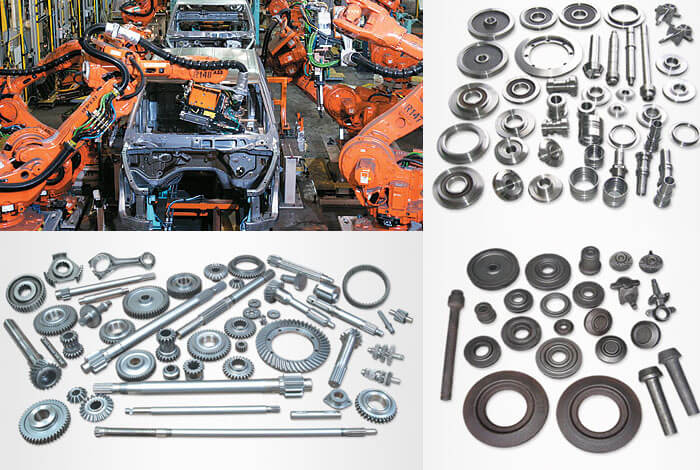The forging process can create parts that are stronger than those manufactured by any other metalworking process. This is why forgings are almost always used where reliability and human safety are critical. But you’ll rarely see forgings, as they are normally component parts contained inside assembled items such a airplanes, automobiles, tractors, ships, oil drilling equipment, engines, missiles and all kinds of capital equipment – to name a few.
Off-Highway and Agricultural

Strength, toughness, machinability, and economy account for the use of ferrous forgings in off-highway and heavy construction equipment, and in mining machinery. In addition to engine and transmission parts, forgings are used for gears, sprockets, levers, shafts, spindles, ball joints, wheel hubs, rollers, yokes, axle beams, bearing holders, and links. Farm implements, in addition to engine and transmission components, utilize key forgings ranging from gears, shafts, levers, and spindles to tie-rod ends, spike harrow teeth, and cultivator shanks.
Valves and Fittings

For valves and fittings, the mechanical properties of forgings and their freedom from porosity are especially suited to high-pressure applications. Corrosion and heat-resistant materials are used for flanges, valve bodies and stems, tees, elbows, reducers, saddles, and other fittings. Oilfield applications include rock cutter bits, drilling hardware, and high-pressure valves and fittings.
Industrial, Hardware and Tools

Stationary and shipboard internal combustion engines include forged crankshafts, connecting rods, rod34920-34911528 caps, camshafts, rocker arms, valves, gears, shafts, levers, and linkages. Outboard motors, motorcycles, and power saws offer examples of the intensive use of forgings in smaller engines. Industrial equipment industries use forgings in materials handling systems, conveyors, chain-hoist assemblies, and lift trucks.
